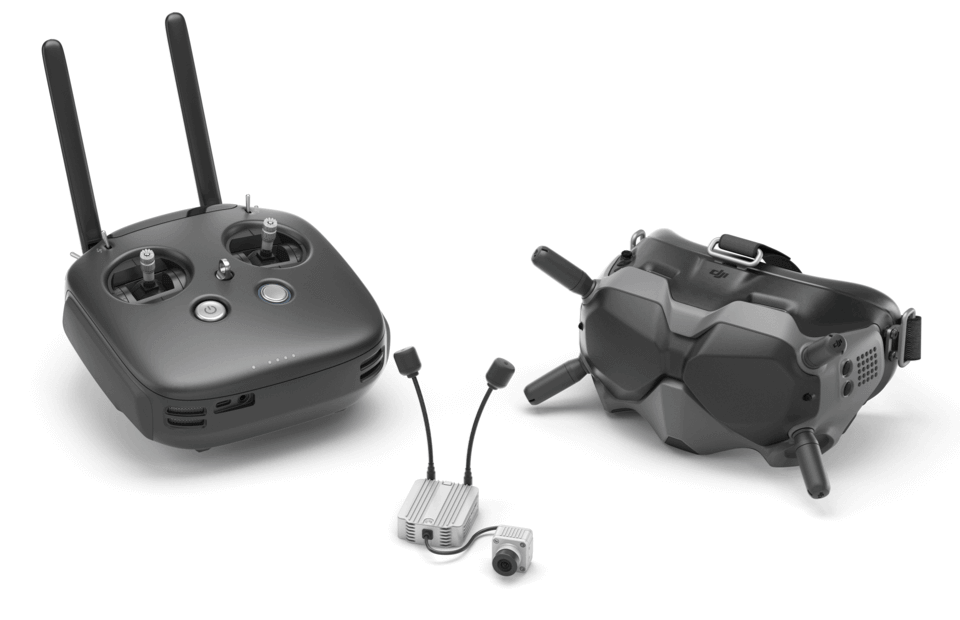
DJI has announced the DJI FPV, an unmanned aerial vehicle that can be controlled from a first-person perspective.
The DJI FPV is an FPV drone that can be directly controlled while viewing the outside from a first-person perspective with the naked eye, equipped with virtual reality goggles contained in the package. You can see the video from the wide-angle camera mounted on the drone in real time with virtual reality goggles, so you can enjoy the feeling as if you are flying freely in the sky. This product is an FPV-specific package introduced by DJI, and you can enjoy FPV flight immediately by unpacking the package.

The flight performance is also enhanced compared to the existing drones, with a maximum ascent speed of 15m/sec and a maximum descent speed of 10m/sec, three times that of the MAVIC series. The top speed is 140 km/h. To realize this flight performance, the propeller was changed from two wings of the existing drone to three. In addition, it has a detachable 2,000mAh battery and a continuous flight time of 20 minutes.
The controller that comes with the package is also redesigned for FPV, and the operating mode offers three modes depending on skill level. Among them, N mode adopted the same control method as existing drones for beginners. It can fly at a maximum of 53km/h while utilizing automatic control of the aircraft. It also provides safety functions such as obstacle detection. The S mode can be controlled more freely than the N mode. The top speed is 97km/h, and you can enjoy high-speed maneuvering while maintaining automatic control. Lastly, the M-mode is fully manual and has a top speed of 140 km/h. FPV can control vertical descent and reversal, but on the other hand, it requires high control skills. In addition, it provides a posture control function that assists the maneuvering for the M mode and prevents the aircraft from reversing if the aircraft is inclined more than a certain level by selecting it. In addition, since M mode is difficult to learn, a practice mode using 3D CG is provided with a smartphone app.

In addition, the controller is equipped with a button such as an emergency brake, so that any mode can be stopped and switched to a stable state in seconds.
In addition, the drone body is equipped with a satellite positioning system, vision sensor, ToF sensor, and LED lighting, and automatically returns to the take-off point based on various sensor information even if the signal is cut off. ADS-B receiver, which receives signals from aircraft, is also installed, and a warning is displayed on the goggles screen when it detects approaching the aircraft. In addition, the virtual reality goggles provided are equipped with a 2-inch screen running at 144Hz, and a 256GB SD card can be inserted so that you can record the video you see. The maximum battery life of the goggles is 110 minutes.
The network connecting the virtual reality goggles and drones uses the 2.4GHz and 5GHz bands. The maximum transmission distance is 6km, the video transmission is 810p, 120fps, and the delay time is 28ms. In addition, the camera mounted on the drone is a 12-megapixel 1/2.3-inch CMOS sensor with a 150 degree wide-angle FOV. It can also be mounted on a gimbal and angled when flying.
Video recording is possible at a maximum of 4k 60fps and 120Mbps. In addition to supporting electronic image stabilization to compensate for image shake and distortion, it is also equipped with a 4x slow-motion shooting function. Related information can be found here.


















Add comment